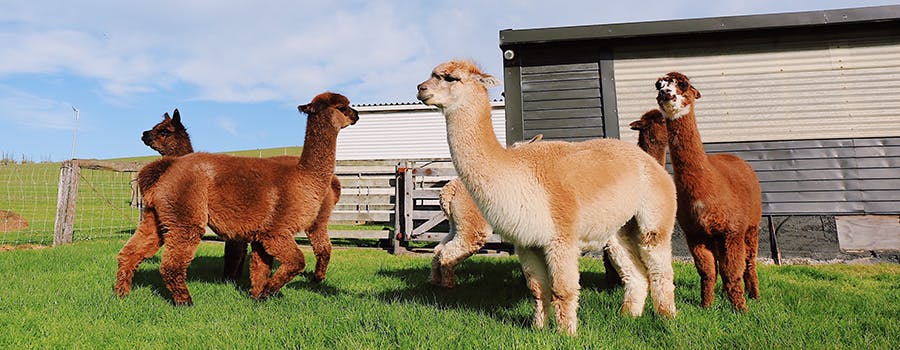Updated 17 June 2025
Recently adopted a cat and wondering where to start with your cat litter box set up? Look no further as we cover common qualms like - how often to change cat litter, where to put your cat’s litter box, what cat litter to use, how to clean the litter box, how many boxes you need, and how to train a cat to use a litter box. Notepads at the ready!
Basic cat litter box set up:
- A durable litter box that allows enough room for your cat to turn freely and bury their poop.
- A type of litter that aligns with your values (such as budget, odor and eco-friendly), and that your cat feels comfortable using.
- A litter box mat that catches litter flyaways and makes the clean-up simpler.
- A litter box scoop for cleaning.
- Cleaning products that are cat-safe and fragrance-free.
- A litter box location where your cat feels safe doing their business.
Trending posts
Purr-use some of the top blogs our members have been loving this month- Top male dog names for your new furry friendGot a new furry family member in your pack? Check…

- Top female dog names for your new fluffy palWelcoming a new pooch into your family? Explore…

- 250+ gray cat names your silver feline will loveRecently welcomed a fluffy gray bundle of joy into…

- What are normal pet sitting rates?Discover the average pet sitting rates for animals…

- Unique dog names to stand out from the packDare to be different with our list of the best…

What is cat litter?
Cat litter absorbs urine which helps to avoid pooling and reduce odors in the home.
Having a box where your cat can do their business also means a happier cat. As sensitive and territorial creatures, cats are particular about where they do their business. Cats instinctively like to bury their waste, and kitty litter allows them to do this in a controlled environment.
Where should I put my cat litter box?
If you’re wondering where to put your cat litter box, the first rule is to keep it away from their food and water. It’s a basic hygiene practice, and it goes against a cat’s instincts to eat where they poop - cats will not eat or drink if their bowls are too close to their litter box.
The best place to put a cat litter box depends on the layout of your home, but the cat box location should be:
- Easily accessible for your cat;
- Away from where they eat and drink;
- On ground level;
- Unblocked by clutter or household objects;
- A place where your cat feels safe and private.
Where should I put the litter box in a small apartment?
If you have limited living space, the most important thing to remember is that your cat’s litter box should be kept in a separate room from their food and water, and be safely accessible for your cat.
What type of cat litter should I use?
The type of cat litter you use is down to your personal preference and your priorities - whether that’s for your litter to be eco-friendly, or to be super efficient at controlling odors. If you’re unsure, speak to your vet to decide which is best for your feline. Below find a few different types of litter to consider:
Types of cat litter:
- Clay litter. It’s often widely available, affordable and absorbent, and is known for its odor-controlling abilities.
- Crystal litter. It’s often made of silica gel, is known for being super absorbent and can be changed less frequently than some clay cat litters.
- Natural litter. These can be made of wood, paper, corn, grass and wheat - they’re biodegradable so it’s a good litter to choose if you want a super eco-friendly option, and can be good for cats with allergies.
It’s a good idea to try out different types of cat litter to see which your feline likes best. It’s also worth keeping in mind that - as Dr. Nita Vasudevan, Veterinarian at Embrace Pet Insurance shared with us, “Most cats tend to prefer clumping, unscented fine-grain litter (such as clay), as it is most similar to sand or dirt, which they might choose to use in the wild”.
Should I use clumping or non-clumping litter?
When learning how to set up a litter box, you might have heard about clumping cat litter. Here’s some information on both types so that you can choose which is best for you, your home, and cat:
Clumping cat litter
When wet, this forms solid clumps, which can make removing soiled litter easier. As clumping cat litter helps cat owners to only remove litter that’s been soiled, it needs to be changed less frequently, and allows for less wastage. Clumping cat litter can be more expensive than non-clumping, but can be more cost-effective in the long run.
And if your cat has allergies, clumping litter can be a better option. Veterinarian Dr. Nita Vasudevan, shared their expert thoughts with us, “Cats with allergies or respiratory disease may do best with a non-scented and less dusty litter option”.
Non-clumping cat litter
Non-clumping cat litter needs to be changed more frequently than clumping because it’s harder to tell which areas have been soiled. This kind of cat litter tends to be more affordable, but tends to be less effective at odor control.
How much litter should I put in the litter box?
So, now you’ve chosen the right litter for your home and cat, you might be wondering how deep the cat litter should be in the box. The rule of thumb is that the cat litter should be deep enough for your cat to do their business and bury it, which tends to be around three inches deep.
How do I choose a suitable litter box?
An important aspect of your cat’s litter box set up is knowing what size litter box is right for your cat. The most important thing is that your cat has enough space to turn freely, and enough room to bury their business. This depends on the size of your cat, and how much space you’ve got at home. There are many options out there - including automatic and self-cleaning litter boxes, but the most important things to remember are ensuring the box has enough space for your cat, and that it’s made of a durable material.
If your cat has a medical condition that limits their mobility, find a litter box that has low sides, or comes with steps. If your budget is limited, consider making your own mini stairs with books or blocks of wood.
Do I need a litter box mat?
Yes, a litter box mat can save you a lot of time when cleaning out your cat’s litter box, and they’re generally very affordable. When burying their business, cats can kick litter out of the box, and having a mat means flyaways are caught and won’t be trodden onto your floor.
How should I clean my cat’s litter box?
Spot-clean your cat’s litter box once per day, and completely empty the litter box every week. This will help to avoid strong odors, and ensure your cat continues to use their litter box. If the box is left to build up, your cat will consider doing their business somewhere else.
When it comes to how to clean the litter box, ensure any cleaning products are cat-safe and not heavily scented. Anything with a super strong smell could cause your cat not to use their litter box.
If your cat is being looked after by an in-home pet sitter any time soon, inform them of your litter box training regime - including how often to change the litter box and which products to use. And equally if you’re going house sitting, be sure to get this information from the pet parents.
How often should I change the cat litter?
Completely change the litter once per week and spot clean daily, adding fresh litter if needed to prevent the litter box smelling. How often litter should be changed also depends on the type of litter you’re using, so check package instructions. And naturally, be sure to discard dirty litter safely and cleanly, scooping the cat litter into a general waste can.
Do I need a liner for my cat litter tray?
Liners for cat litter trays can make cleaning out your cat’s litter box easier, depending on what the liner is made from. Many liners - such as newspaper or polythene tray liners - are prone to leakage, and can easily be punctured by your cat’s claws.
How many litter boxes per cat?
You should provide one litter box per cat, so the number of litter boxes you buy depends on the number of cats in your home. If you’re considering multiple cats, consider whether you’ve got space for multiple litter boxes.
Why? Well cats are territorial animals, and can be particular about cleanliness. Cats prefer their own space to poop, so won’t appreciate sharing a litter box with another cat. Many cats will straight up refuse to share a litter box.
In single-cat households, the number of cat litter boxes will depend on the amount of space you have, whether they’re indoor cats, and whether they have any medical conditions. For example, an elderly indoor cat with joint issues in a spacious apartment might need a few litter boxes around the place. They may struggle to move about and need to use the bathroom more frequently, so this will definitely help them out. But, if you have an active outdoor cat who’s home about half the time, one box will be enough.
How do cats know to use a litter box?
Cats aren’t born knowing how to use a litter box - that takes training, but cats do have a natural instinct to bury their waste. That’s why cat litter suits them - it allows them to do their business in a designated, safe environment where they’re free to bury their poop.
How can I train a cat to use a litter box?
Wondering how to train a cat to use a litter box, or how to show a cat litter the box? Follow these simple steps:
- Choose the right box and litter. Start with a litter box that’s the right size for your cat, and experiment with different types of litter if you need to.
- Introduce the litter box. Show your cat their litter box and provide treats so that they learn to associate the litter box with positive experiences.
- Encourage and reward your cat. Encourage your cat to use their litter box by rewarding them whenever they use it.
- Never punish your cat. If your cat doesn’t use the box or they’re peeing or pooping outside the litter box, do not punish them. Instead, praise the behavior you want to encourage.
Why is my cat lying in their litter box?
There are a few reasons why you might find your cat lying in their litter box. These include:
- Territory. If you have a multi-cat household, your cat might lay in their litter box to mark it as their own.
- Safety and comfort. If you’ve recently moved home, adopted a new pet or there are loud noises outside, your cat might seek the security of their litter box.
- Medical issues. There’s an array of medical issues that might explain why your cat is lying in their litter box, such as cognitive decline or gastrointestinal problems. If you notice a change in your cat’s behavior and you’re worried, make an appointment with your vet.
Do you have any of your own cat litter box setup tips and tricks? Share the love and knowledge on our Community Forum with other pet parents and pet sitters. Connect with other like-minded feline fanatics through cat chat. Or, if you’re in need of a pet sitter, check out all the cat sitters currently available near you - find the perfect sitter for your precious pet today.

